Budget Bread Recipe: A Cheap and Easy Loaf
This budget-friendly bread recipe is perfect for anyone wanting to bake their loaf without breaking the bank. Straightforward ingredients and simple steps make it easy to follow. But it’s not just cheap and easy, this bread comes out soft and delicious. One of the yeast bread recipes I recommend for the complete beginner.
Cheap Bread Recipe
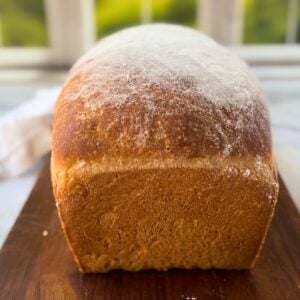
Equipment
- Plastic Wrap
Ingredients
- 2 ¾ cups all-purpose flour
- 1 cup lukewarm water
- 2 tablespoons vegetable oil
- 3 tablespoons sugar
- 1 ¼ teaspoons salt
- 2¼ teaspoons instant or active dry yeast
Save This Recipe
You'll join my email list which you will love. And if you don't, unsubscribe in one click. ❤️
Instructions
- Mix the ingredients. Add all ingredients to an electric stand mixer or a large mixing bowl. Then, combine until a dough forms that holds together and does not stick to the sides or bottom of the bowl.
- Knead the dough. Knead the dough for 10 to 15 minutes until it is smooth, soft, and reaches the windowpane stage (when you can stretch a small piece of dough thinly enough to see light through it without it tearing). If the dough feels dry after a couple of minutes of kneading, sprinkle in water a teaspoon at a time.
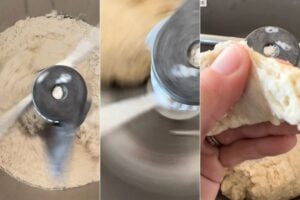
- The first rise. Shape the dough into a ball and place it in a clean, lightly oiled bowl. Then, cover it with a clean, damp tea towel and let it rise in a warm place for about 60 minutes until the dough is puffy and has doubled in size.

- Shape into a loaf. Lightly spray your loaf pan with nonstick cooking spray. Then, gently stretch the dough into a rectangle approximately 9 x 18 inches. The rectangle's short side should match your loaf pan's length. Tuck in the corners and roll the dough tightly into a log. Pinch the seams closed and place the loaf, seam side down, into the prepared loaf pan.

- Allow to rise again. Cover the loaf with greased plastic wrap and let it rise in a warm place until the dough rises to about 1 inch above the top of the pan. Towards the end of the rising time, preheat your oven to 350°F (175°C).

- Bake. Bake the bread at 350°F for 35-40 minutes, until the loaf sounds hollow when tapped on the bottom. For the best results, use an instant-read thermometer to check the internal temperature of the bread; it should reach 195-200°F. Remove the bread from the pan and allow it to cool completely on a wire rack before slicing.

Notes
Nutrition
More Tips:
Make sure your yeast hasn’t expired. Fresh yeast makes your bread rise well; otherwise, it might be too thick and heavy.
Keep the water warm, about 110°F, to work well with the yeast. If the water is too hot, it could kill the yeast. If it’s too cold, the yeast might not work at all.
A Newsletter you’ll love
Daily recipes from the farmhouse, Sunday meal plans, seasonal ideas, straight from my kitchen to your inbox.
I promise to keep your email address safe. Unsubscribe at any time
When measuring flour, just scoop it into the measuring cup and level it off without packing it down. Putting in too much flour can make the dough hard and dry.
Choose a warm place with no drafts for your dough to rise. Alternatively, you can warm up your oven to its lowest setting, turn it off, and put the dough inside to keep it slightly warm.
If your kitchen is usually cool, your dough might not rise well. A turned-off oven with the light left on can make a cozy spot, or try to find another warm, sheltered area.
Baking bread can take a few tries to get perfect. If your first loaf isn’t great, don’t worry. Each time you try, you’ll learn and improve.
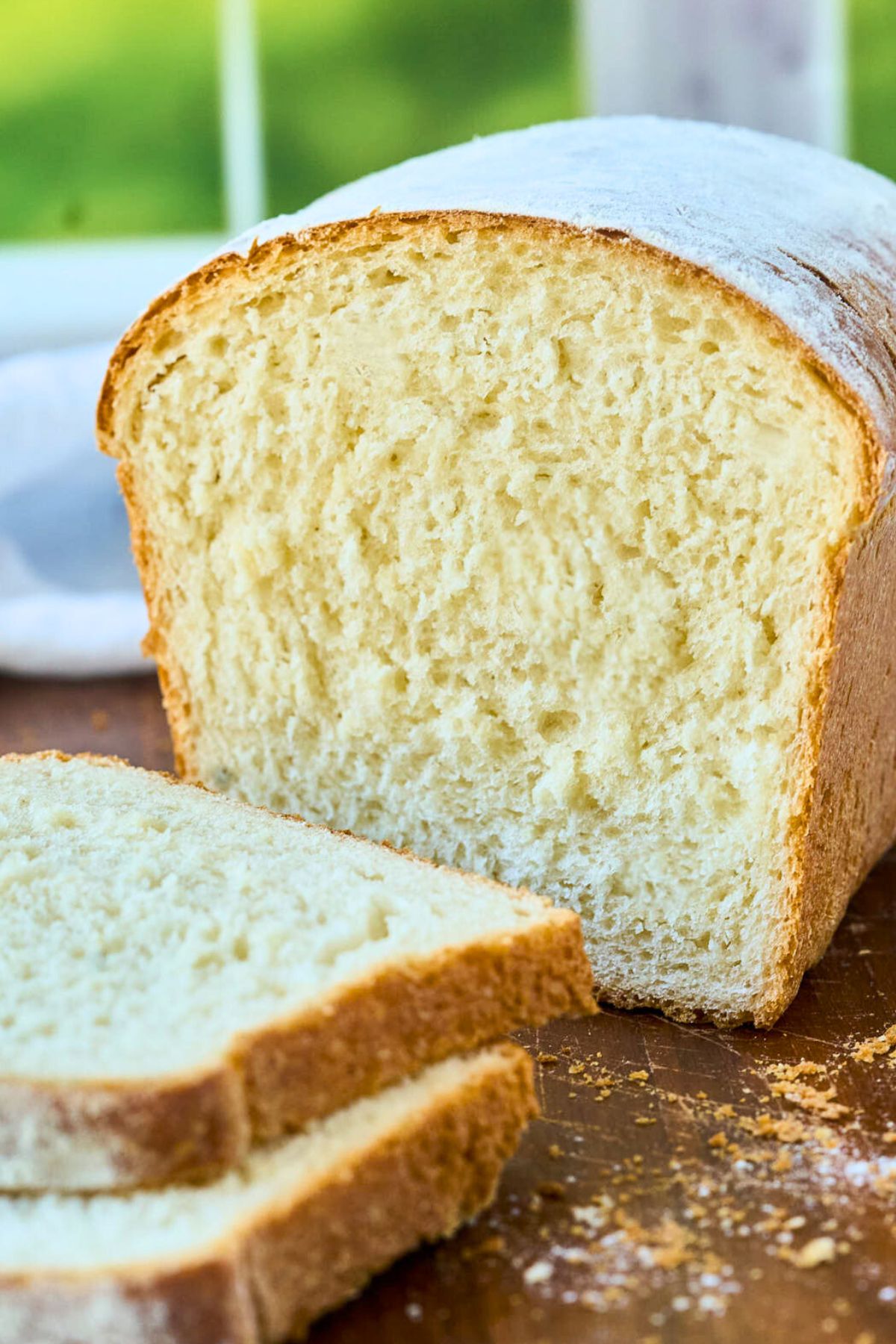
Key Ingredients and Tools
Here are a few key tools and ingredients you’ll need to make this bread recipe a success:
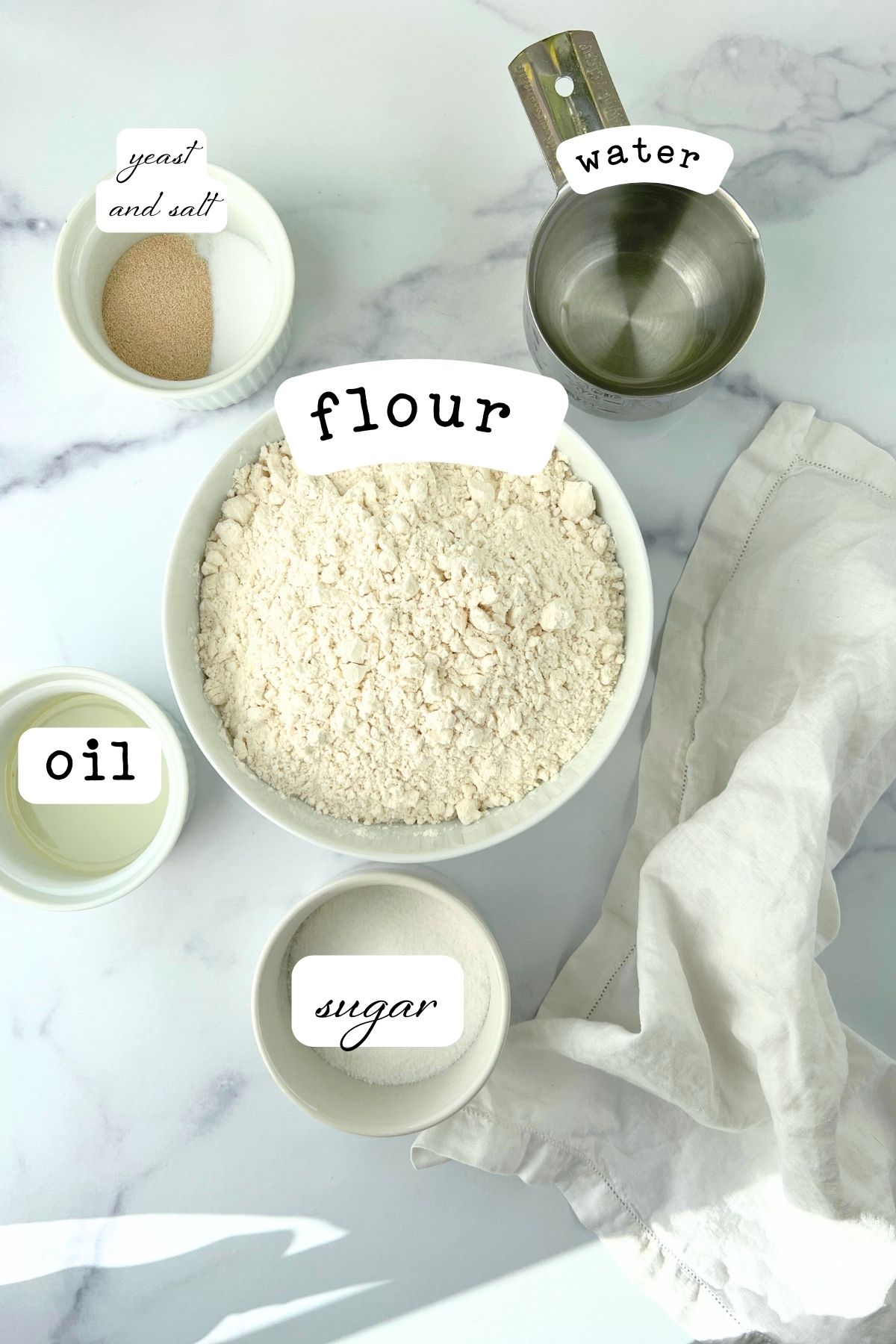
- All-purpose flour. This is the base of your bread, providing structure and texture. It’s versatile and readily available in the baking aisle. You can swap all-purpose flour with bread flour if you want your bread to be a bit chewier. Or use whole wheat flour if you like your loaf denser.
- Instant or active dry yeast. This makes your bread rise and gives it that soft, fluffy texture. It is in the baking aisle, usually near the flour and sugar.
- Vegetable oil. This adds moisture and softness to your bread. If you like, you can try melted butter or olive oil after a more flavorful bread.
- Sugar. A little sugar helps feed the yeast and adds a touch of sweetness. You can also substitute it with honey or maple syrup, adjusting the liquid in the recipe accordingly.
- Lukewarm water. The temperature of the water is important—if it’s too hot, it can kill the yeast; if it’s too cold, the yeast won’t activate properly.
- Stand mixer. While you can knead the dough by hand, using a stand mixer with a dough hook attachment makes the process much easier and more consistent.
- Loaf pan. This tool is essential for shaping your bread into a perfect loaf. Make sure to grease it to prevent sticking lightly.
These items will help make sure your bread turns out perfectly every time.
Troubleshooting and Help
No worries! You can knead the dough by hand. It might take a bit longer and require more elbow grease, but it’s doable. Knead the dough on a floured surface until it’s smooth and elastic—about 10 to 15 minutes.
Absolutely! You can divide the dough into smaller portions to create rolls or mini loaves. Just be sure to adjust the baking time accordingly. Check rolls at 15 minutes and a half-sized loaf at 25.
It’s likely the yeast didn’t activate properly. Make sure your water is lukewarm—not too hot or too cold. Also, double-check that your yeast is fresh. Expired yeast can prevent your bread from rising well. Sometimes, baking at high altitudes can cause unexpected results. If you’re facing this challenge, this high-altitude baking guide offers great tips to make sure your bread turns out perfectly.
Great question! One way to check is by doing the “windowpane test.” Take a small piece of dough and stretch it gently between your fingers. You’re good to go if it stretches thin enough to let light through without tearing!
No problem! You can shape the dough into a round loaf and bake it on a baking sheet. It might not have the same uniform shape, but it tastes great.
I hope you enjoy making this simple and budget-friendly bread recipe at home. It’s a great way to bring fresh, homemade bread to your table without spending a lot of money. Whether you enjoy it warm in the oven with a pat of butter or as the base for your favorite sandwich, this versatile recipe will surely become a regular in your kitchen. Plus, it’s easy enough for anyone to try, even if you’re new to bread baking. Give it a go, and I’d love to hear how it turns out for you.
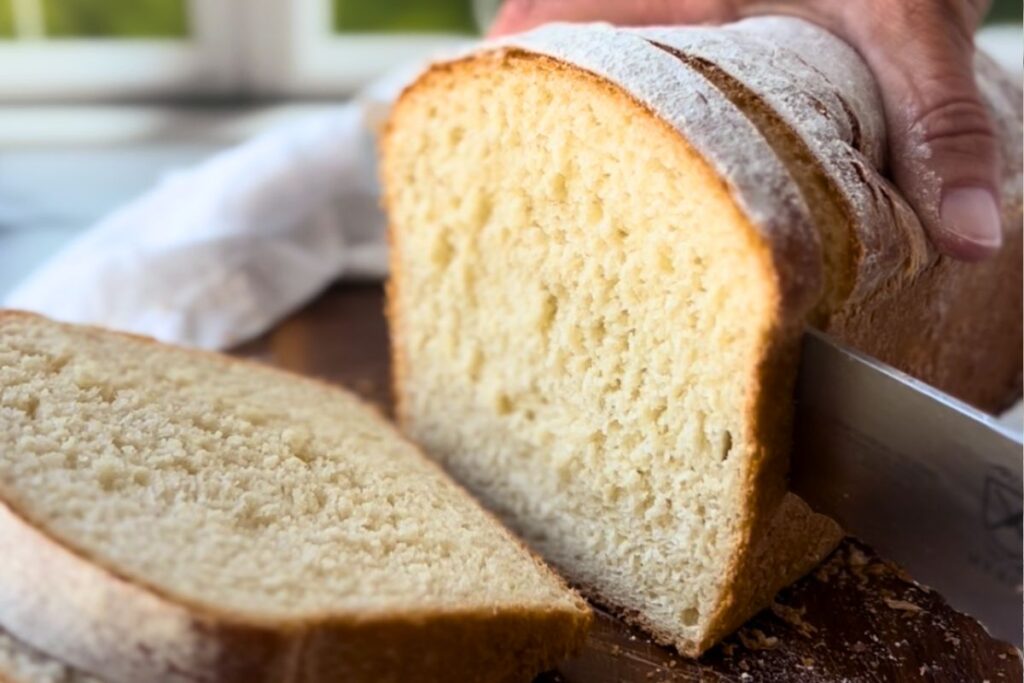
Love,


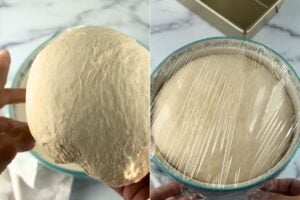
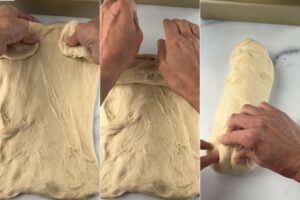
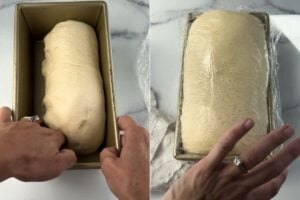










Super simple and delicious
I plan to make this dough in my bread machine. Can you tell us what size loaf pan you used? I’m guessing the 8×4 and not the 9×5? TIA!
8 x 4 yes!
Thank you for this recipe! This was basically my first time making regular bread and I’m so happy with how it came out! I had tried sourdough from a starter back when everyone was doing that, but found the process complicated to keep up with and didn’t do it for very long. I recently stopped working to be at home full time and have been enjoying your blog a lot during this transition. I appreciate the articles on shifting your mindset on homemaking and being frugal. I am viewing it as a fun challenge to make one income living work well for us, and one goal I had is to learn to make my own bread. With school lunches, we go through a lot of sandwiches. This recipe felt very doable, especially with using very basic ingredients. I bought a jar of instant yeast at your suggestion, so I can just scoop some out. I love that this bread can be used for both sandwiches and for serving at dinner since it tastes so fresh – and I feel a sense of pride putting it on the table. Now I know I can make sandwich bread at home, I will definitely be doing it more regularly.
gretchen! you are the best! good for you trying something new and i’m so glad your bread was a success. welcome to your new adventure and i hope to continue to help you ❤️
Would it be possible to replace the water with milk in this recipe?
yes, absolutely. i used water for budget purposes but milk is great. maybe a slightly longer rise, but not much 🙂
Help please. I’m missing something. I just made this recipe 6x. First rise always surprises me (20 minutes in kitchen 68°F)… Tested 2nd rise 6 ways…from 1/4 inch above rim to 5/8 above. All 6 same results – fall flat the second they hit the oven. Confident in measurements – all on gram scale. I’ll do ANYTHING to get a loaf like your photo. Advice please? Thank you!!!!
John Robert
John Robert I’m so sorry I just saw this. If it’s rising fast and falling flat, I’d say the dough is too wet and you need a little more flour. I don’t develop my recipes in grams so that could be the issue. Good luck!!!!
Also I’m assuming you’re using instant yeast not rapid rise, which is different.
What size loaf pan please?
Can I adjust it for my Wilton 6.4 x 9.7 x 3.6 inches
(https://www.amazon.com/gp/aw/d/B00K721YY2?psc=1&ref=ppx_pop_mob_b_asin_title)
I can’t wait to try this. I cook bread for charity every week
Thanks so much.
Hey John, looks like your pan is a tad larger than average? I would personally try to triple the recipe and divide it into 2 loaves. Or multiply each ingredient by 1.5. You can double or triple on the bottom of the recipe card.
Thank you
Any thoughts on doing this in a bread machine?
it will be just fine in there!